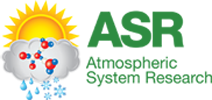Comprehensive Characterization of the Seasonal Cycles of Ice Nucleating Particles for Studies of Precipitation Drivers in SAIL
Authors
Russell James Perkins — Colorado State University *
Ruichen Zhou — Colorado State University
Drew Juergensen — Colorado State University
Kelton Ayars — Colorado State University
Oren Dutton — Colorado State University
Paul J. DeMott — Colorado State University
Sonia Kreidenweis — Colorado State University
Category
ARM field campaigns – Results from recent ARM field campaigns
Description
Ice nucleating particles (INPs) are a critical driver of cloud phase and precipitation but are often under-sampled in the atmosphere. In particular, the spatial variability in INP concentrations is poorly understood, especially in complex terrain environments, as is the balance between local and long-range sources. In order to close this gap, we have analyzed samples and data collected during the Surface Atmosphere Integrated Field Laboratory (SAIL) campaign that took place near Crested Butte, CO, from September 2021 to June 2023. The INP sample set consists of long-term collections across all seasons from the ARM INP mentor program, as well as spatial dispersed ground site collections by Handix Scientific through their SAIL-NET program and vertically resolved samples collected by the ARM tethered balloon system (TBS). Our preliminary results from analysis of this dataset are: 1) INP concentrations and characteristics are largely regional in nature, despite the complex terrain, 2) Dust is the most prevalent INP source in this region, with spectra similar to those observed in mineral and arable soil dusts, 3) Increased INP concentrations associated with anthropogenic activities are observed, both from cloud seeding and local snowmaking activities, but seeding INPs are significantly less efficient than expected. We are developing parameterization products for INPs for incorporation into numerical models, and relatively simple parameterization methods appear promising so far.
Lead PI
Russell James Perkins — Colorado State University

